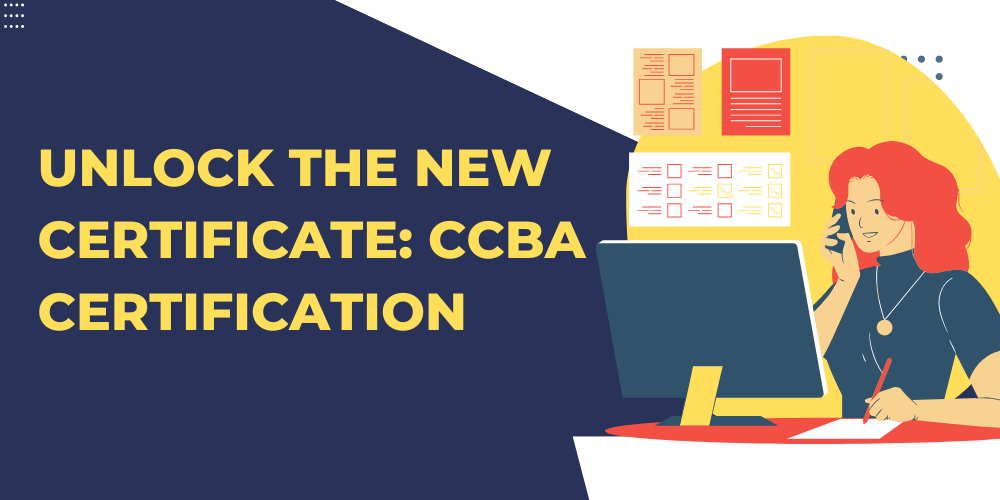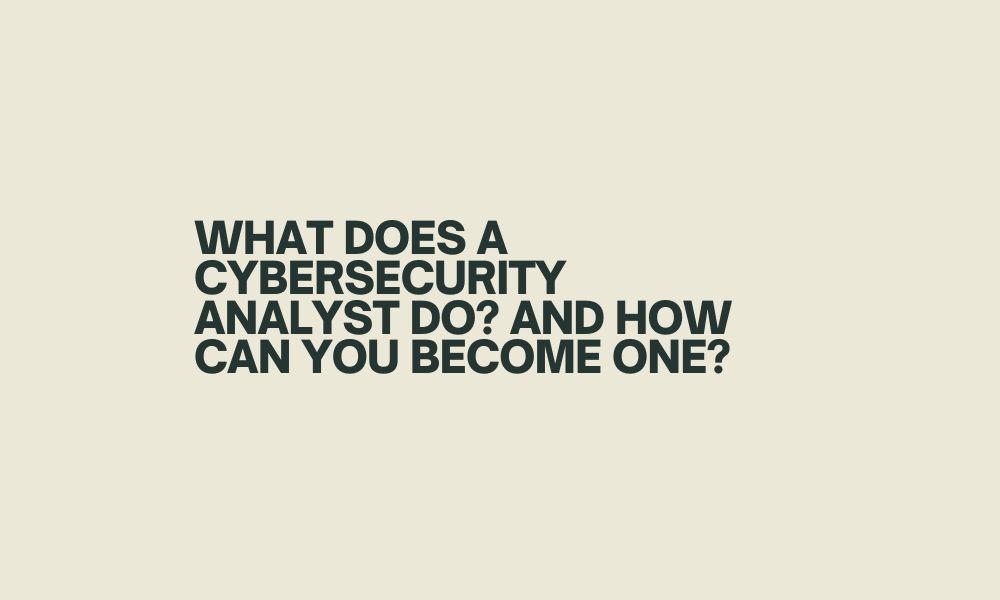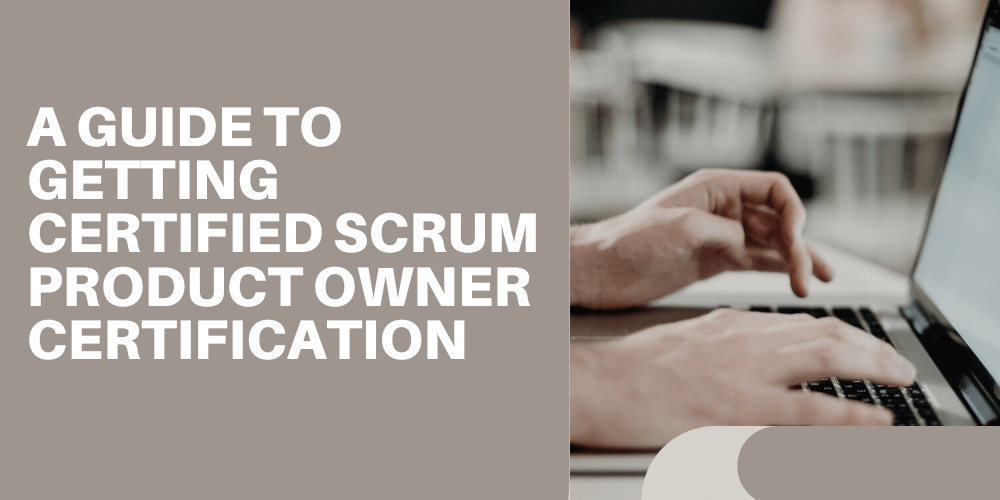TRUSTED BY THE SMARTEST TEAMS IN THE WORLD FOR CERTIFIED CANDIDATES
SPOTO Blogs
Useful learning materials to become certified IT personnel
-
- 299
- SPOTO
- 2025-07-23 17:33
-
- 448
- SPOTO
- 2025-07-23 15:00
-
- 587
- SPOTO
- 2025-07-23 14:20
-
- 635
- SPOTO 2
- 2025-07-23 13:00
-
- 880
- SPOTO 2
- 2025-07-23 09:24
-
- 610
- SPOTO
- 2025-07-22 15:43
-
- 221
- SPOTO
- 2025-07-22 14:54
-
- 657
- SPOTO 2
- 2025-07-22 13:55
-
- 624
- SPOTO 2
- 2025-07-22 11:44
TRUSTED BY THE SMARTEST TEAMS IN THE WORLD FOR CERTIFIED CANDIDATES
SPOTO Blogs
Useful learning materials to become certified IT personnel
-
- 299
- SPOTO
- 2025-07-23 17:33
Table of ContentsWhat Is a Cloud Collaboration Engineer? Responsibilities of a Cloud Collaboration EngineerSkills RequiredTypical Job DescriptionHow to Become a Cloud Collaboration EngineerCloud Collaboration Engineer vs. Collaboration SpecialistDaily Tasks OverviewTools & Technologies UsedReal-World Project ExamplesWhy the Role Matters What Is a Cloud Collaboration Engineer? A Cloud Collaboration Engineer specializes in architecting, deploying, and optimizing cloud platforms that enable real-time teamwork—such as Microsoft Teams, Zoom, Slack, and Salesforce Chatter. They seamlessly integrate cloud infrastructure, networking, automation, and user experience to support secure and efficient collaboration for distributed teams. Responsibilities of a Cloud Collaboration Engineer Cloud Architecture & Deployment Design scalable, multi-region collaboration environments using AWS, Azure, or Google Cloud. Configure VMs, networking, firewalls, storage, and identity management. Security & Compliance Implement access controls, encryption, and compliance measures; ensure alignment with regulations like GDPR and HIPAA. Monitoring & Incident Response Continuously monitor system health and respond to alerts and outages in real time. Cost & Performance Optimization Global public cloud spending is projected to reach $723.4 billion in 2025. 32% of cloud budgets are typically wasted due to idle or overprovisioned resources. 60% of companies rank cost savings as their top cloud initiative. Cross-Team Collaboration Partner with developers, security, networking, and business teams to align infrastructure with organizational goals. Skills Required Technical Skills Cloud Expertise: 96% of companies use at least one public cloud; 50% of their workloads reside there. Infrastructure as Code (IaC): Tools like Terraform and CloudFormation. Networking: Fundamentals like IP, VPC, DNS, and load balancing. Containers & Orchestration: Docker, Kubernetes. Scripting & Automation: Python, Bash, PowerShell. Security & Governance: Identity and access management, encryption. Soft Skills Communication & Teamwork: Essential for cross-functional collaboration. Problem-Solving: Most in-demand soft skills proven essential for IT roles. Adaptability & Continuous Learning: Crucial in a rapidly evolving cloud landscape. Typical Job Description Position: Cloud Collaboration Engineer Key Duties: Build and maintain 24/7 cloud-based collaboration systems. Automate deployments and manage IaC. Monitor performance, ensure reliability, and optimize spend. Enforce compliance and manage audits. Document configurations and prepare SOPs. Qualifications: Bachelor’s in Computer Science, IT, or similar. Minimum 3 years of experience in cloud engineering or related roles. Certifications such as AWS Certified Solutions Architect, Azure Solutions Architect, Google Cloud Professional Cloud Architect. Hands-on experience with scripting, IaC, networking, and security. How to Become a Cloud Collaboration Engineer Educational Foundation & Certifications: Obtain a relevant degree and cloud certifications. Technical Skill-Building: Learn Linux/Windows, networking, IaC, scripting, containers, and security. Hands-On Practice: Deploy collaboration tools, implement migrations, and handle cloud integrations. Develop Soft Skills: Hone communication, teamwork, and troubleshooting abilities. Build a Portfolio: Showcase real projects and pursue advanced certifications (e.g., CCNP Collaboration). Stay Engaged: Join cloud communities and stay updated with emerging technologies like serverless and FinOps. Cloud Collaboration Engineer vs. Collaboration Specialist Aspect Cloud Collaboration Engineer Collaboration Specialist Focus Backend deployment, automation, infrastructure End-user support, training, and adoption strategies Key Skills Cloud platforms, IaC, network, security User UX, communication, training Objective Build scalable, secure systems Increase user engagement and effective adoption Daily Tasks Overview Morning system health checks and incident reviews. Provision or adjust cloud configurations. Apply updates and security patches. Refine IaC templates and automation pipelines. Conduct stakeholder planning sessions. Analyze metrics for performance and cost. Troubleshoot emerging issues. Update documentation and SOPs. Tools & Technologies Used Cloud Platforms: AWS, Azure, GCP IaC: Terraform, CloudFormation Containers: Docker, Kubernetes CI/CD: Jenkins, GitHub Actions, Azure DevOps Monitoring/Security: CloudWatch, Azure Monitor, Splunk Collaboration Tools: Microsoft Teams, Zoom, Slack, Salesforce Chatter Real-World Project Examples Enterprise Teams Migration: Built a hybrid network infrastructure on Azure with SSO and compliance integration. Automated Slack Onboarding: Developed Terraform scripts to set up workspaces, channels, and permissions. Zoom DR Implementation: Engineered cross-region AWS configurations with auto-failover capabilities. Why the Role Matters With nearly all enterprises (94%) expected to use cloud services by 2025, and cloud costs often exceeding plans by 17%, the role of cloud collaboration engineers is essential. They ensure collaboration platforms are secure, reliable, cost-effective, and agile—enabling businesses to stay connected and compliant at scale. -
- 448
- SPOTO
- 2025-07-23 15:00
Table of Contents1. What is cloud collaboration?2. What is a cloud collaboration engineer?3. Salary and employment prospects of cloud collaboration engineers?4. What qualifications do you need to become a cloud collaboration engineer? 1. What is cloud collaboration? Cloud collaboration is the ability for people to access the same source of information (single source of truth) and work together as virtual teams in a virtual space, through a website, mobile app or desktop software. Whether it is used to implement design, project, budget or analysis, cloud collaboration allows the right people to easily access data at the right time, regardless of the tool used to write the data, and access the data as early and frequently as possible. Architects can share building models; engineers can review drawings; film editors can upload clips for directors to review. 2. What is a cloud collaboration engineer? A cloud collaboration engineer is a technical professional responsible for translating business goals into specific configurations, policies and security practices related to users, content and integration by using technologies such as cloud computing. The responsibilities of cloud collaboration engineers mainly include designing, deploying and managing cloud infrastructure that supports collaboration tools (such as video conferencing, file sharing and communication platforms), ensuring its scalability, security and reliability. They are mainly responsible for integrating various cloud collaboration tools with the organization's existing IT infrastructure to ensure seamless communication and collaboration between different platforms. In addition, cloud collaboration engineers also need to configure and customize collaboration tools according to the needs of the organization, including setting up security protocols, user permissions, workflows, and other functions to ensure that the collaboration platform meets industry standards and regulatory requirements, and implement security measures such as encryption and authentication to protect sensitive data. Finally, cloud collaboration engineers also work closely with other IT teams (such as network engineers and security engineers) to ensure that collaboration tools are smoothly integrated and run with the organization's network. They need to monitor the performance of cloud collaboration services, detect problems in a timely manner, conduct root cause analysis, and resolve any technical issues. 3. Salary and employment prospects of cloud collaboration engineers? According to ZipRecruiter, as of June 8, 2025, the average hourly wage for cloud engineers in California is $62.06. Salaries range from $86.12 to $23.25, but most cloud engineers in California currently earn between $52.88 and $70.67. The average salary range for cloud engineers varies widely (up to 17%), which means there are many opportunities for advancement and salary increases depending on skill level, location, and years of experience. As the demand for cloud computing continues to rise, so does the demand for cloud-related talent. The U.S. Bureau of Labor Statistics (BLS) predicts that cloud computing jobs will grow by 15% in the decade between 2021 and 2031. This growth rate is much higher than the average for other occupations. Factors driving this astonishing growth include rising corporate cloud migration rates and the growing need for more effective and efficient methods of data storage, management, and analysis. 4. What qualifications do you need to become a cloud collaboration engineer? First, becoming a cloud collaboration engineer usually requires a certain educational background to demonstrate your expertise to employers. Common qualifications include a bachelor's degree in cloud computing, information technology, computer science, or a related field, but a higher level of education can better advance your career development. Second, becoming a cloud collaboration engineer requires professional skills in related fields. Network engineering is the most popular professional ability among employers, with about 34% of positions requiring this skill. In addition, network routing, automation technology, computer science basics, firewall configuration and switch management are also popular. In terms of general skills, troubleshooting ability is the most frequently appearing skill in recruitment information, followed by communication and coordination, system operation and maintenance, project management, problem solving and planning ability. Finally, obtaining a certification that is highly recognized by the industry can not only prove your professional ability and ability to perform the position, but also enhance your competitiveness in the workplace. Therefore, we recommend that you obtain the Cisco CCNP Collaboration certification. Obtaining the CCNP Collaboration certification can prove your skills in collaborative solutions. To obtain the CCNP Collaboration certification, you need to pass two exams: one covering core collaboration technology and the other is a professional exam of your choice, allowing you to customize the certification according to your own technical field. Candidates can obtain certification by passing the required exams. -
- 587
- SPOTO
- 2025-07-23 14:20
Table of Contents1.What Is a Network Analyst?2.Network Analyst tasks and responsibilities3.Network Analyst salary and job outlook4. What qualifications does a Network Analyst need?5. Which certifications are helpful in becoming a Network Analyst? A network analyst is a network professional who uses different tools and software to analyze the performance of existing enterprise network systems and detect possible problems and vulnerabilities. This article will introduce you to what a network data analyst is, the career information and prospects of a network data analyst, and the necessary conditions to become a network data analyst. 1.What Is a Network Analyst? A network analyst is a professional technical analyst who is responsible for installing, maintaining and troubleshooting computer network systems for an organization or business. Their work includes designing, developing and evaluating network systems and related communications and providing technical support for all components of the system, including hardware and software. 2.Network Analyst tasks and responsibilities The work of a network analyst is mainly to use analysis platforms such as KNIME, programming languages such as Python, and visualization tools such as Tableau to obtain and analyze data information, and then classify and store primary and secondary data information according to actual needs, and optimize enterprise databases and troubleshoot problems in enterprise systems. 3.Network Analyst salary and job outlook The median annual salary for network analysts is $103,800, while the average annual salary for network analysts in the United States ranges from $61,483 to $102,211. Education and experience are key factors that affect a network analyst's salary. According to Zippia, network analysts with a master's degree can expect to earn $76,231 per year. Bachelor's degrees average $73,688 per year, while associate's degrees average $67,036 per year. Although the U.S. Bureau of Labor Statistics (BLS) does not conduct a specific job outlook analysis for the network analyst occupation, it reports that the employment growth rate for computer system analysts (the two are basically the same) is 7%, and the employment growth rate for network and computer system administrators (a type of network analyst) is 4%, which is close to network analysts and can provide a reference for employment prospects. Overall, with the increased reliance on IT and investment in faster technology and networks, the employment opportunities for network analysts are likely to grow and the employment outlook is bright. 4. What qualifications does a Network Analyst need? First, most entry-level network analyst positions require at least a bachelor's degree in a related field. Employers looking for network data analysts usually require candidates to have a bachelor's degree in computer science, engineering, telecommunications, or information systems. These courses provide the skills and knowledge required for the career and are also a stepping stone to enter the field. Second, having the skills required for the career is key to successfully applying for a position and being competent for the job. Network routing is the most valued professional skill by employers when recruiting network analysts, and 25% of job openings require this skill. Secondly, job seekers with skills in network switches, telecommunications, local area networks, computer networks, and network hardware are also highly sought after in the job search process. As for soft skills, troubleshooting (problem solving) is the most required skill for network data analyst positions, followed by communication, customer service, operations, management, and problem solving. Finally, obtaining a highly recognized certification in the industry can prove your professional ability and ability to perform the position, and enhance your competitiveness in the workplace. Therefore, we recommend that you obtain an authoritative certification in the field of network analysts to improve your chances of success in your application. 5. Which certifications are helpful in becoming a Network Analyst? Cisco Certified DevNet Expert is a significant help for professionals who want to become network analysts. This certification not only proves that the holder has deep knowledge and skills in traditional network architecture, but also shows that he has professional capabilities in automation, programming, and network programmability. Cisco Certified DevNet Expert not only enhances the technical strength of network analysts, but also broadens their career prospects in the era of digital transformation. -
- 635
- SPOTO 2
- 2025-07-23 13:00
Table of Contents1. What is IIBA's CCBA certification?2. Benefits of having Certified Capability in Business Analysis certification3. About the Certified Capability in Business Analysis credential4. What abilities does the Certified Capability in Business Analysis certificate on require the holder to have?5. Alternative certifications to Certified Capability in Business Analysis Curious about CCBA certification? Discover its components, requirements, and why this global project management credential matters. 1. What is IIBA's CCBA certification? Certified Capability in Business Analysis (IIBA’s CCBA) is a professional certification in the field of business analysis launched by the International Institute of Business Analysis (IIBA). It is aimed at business analysis practitioners with certain experience and aims to verify their ability to use business analysis knowledge, tools and skills to solve problems in complex business scenarios. It is an important transitional certification from "entry-level" to "senior" in the field of business analysis. CCBA focuses on "practical business analysis capabilities," requiring not only the mastery of the basic theoretical framework of business analysis, but also the ability to apply this knowledge in actual projects, such as demand collection and analysis, stakeholder management, business process optimization, etc. It fills the gap between "entry-level certification" and "expert certification" and is suitable for practitioners with 2-3 years of experience who want to systematically improve their practical business analysis capabilities. 2. Benefits of having Certified Capability in Business Analysis certification CCBA is based on the BABOK Guide, a globally recognized business analysis framework. The certification process ensures that practitioners master systematic analysis methods rather than fragmented experience. It is highly recognized by companies and is an effective proof of ability standardization. According to IIBA data, the average salary of CCBA holders is 15%-20% higher than that of non-certificates. In recruitment, CCBA is an important symbol to distinguish between "junior" and "intermediate" business analysts, which can help practitioners strive for higher salaries and provide an effective foundation for career advancement. The preparation process for CCBA also forces practitioners to systematically sort out the six major knowledge areas of BABOK and improve their ability from "performing analytical tasks" to "solving complex business problems," such as more proficiently using SWOT analysis to formulate business strategies, or identifying efficiency bottlenecks through process modeling. In addition, IIBA has branches in more than 100 countries around the world. CCBA certification is internationally recognized and suitable for practitioners of multinational companies or business analysts who plan to develop overseas. It has strong global applicability. In short, CCBA is an important credential of "practical ability" in the field of business analysis. Its core value lies in proving that practitioners can independently complete analytical work in complex business scenarios and provide effective support for business decisions. It is a key step in the career development from intermediate to senior business analysts. 3. About the Certified Capability in Business Analysis credential The CCBA exam consists of 150 multiple-choice questions and lasts for 3 hours. The exam content is based on BABOK Guide v3, covers 6 major knowledge areas, and focuses on scenario applications. The passing score is 70% or above, and approximately 105 questions need to be answered correctly to pass the exam. The exam fee is $325 for IIBA members and $450 for non-members. The certification is valid for 3 years and requires 60 hours of PD Hours every 3 years and a renewal fee of $85 for members and $120 for non-members. The CCBA qualification is suitable for practitioners with 2-3 years of business analysis experience or professionals who have transitioned from other positions to business analysis, such as project managers or product managers who want to deepen their analytical capabilities. "Quasi-intermediate" practitioners who plan to advance to senior business analysts can also accumulate experience and knowledge base through CCBA. 4. What abilities does the Certified Capability in Business Analysis certificate on require the holder to have? (1) Work experience requirements CCBA candidates must have accumulated at least 3,750 hours of business analysis work experience in the past 7 years, which is about 2 years of full-time work. Among them, at least 4 knowledge areas in the BABOK Guide must be covered, and the working time in each area must not be less than 200 hours. Some relevant work experience in non-pure business analysis positions is allowed, such as demand analysis, business process optimization, and analysis work involved in project coordination. (2) Professional development requirements CCBA candidates must complete at least 21 hours of professional development courses, and the content must be related to business analysis. (3) Reference endorsement CCBA candidates must provide endorsements from 2 professional references to prove that the submitted work experience is true and valid and that the reference must have CBAP certification or understand the applicant's work content. (4) Maintaining certification CCBA certification is valid for only 3 years. Candidates need to accumulate 60 hours of PD Hours every 3 years and pay a renewal fee of US$85 for members and US$120 for non-members. 5. Alternative certifications to Certified Capability in Business Analysis Entry Certificate in Business Analysis (ECBA) Certified Business Analysis Professional (CBAP) (Professional in Business Analysis (PBA) -
- 880
- SPOTO 2
- 2025-07-23 09:24
Table of Contents1. What is IPMA Level C certification?2. Benefits of having International Project Management Associate Level C certification3. About the IPMA Level C credential4. What abilities does the IPMA Level C certificate require the holder to have?5. Alternative certifications to International Project Management Associate Level C Curious about IPMA Level C certification? Discover its components, requirements, and why this global project management credential matters. 1. What is IPMA Level C certification? International Project Management Associate Level C (IPMA Level C) is a professional project management certification launched by the International Project Management Association. It belongs to the "Project Manager Level" in the IPMA four-level certification system. It is mainly aimed at practitioners who are responsible for independently managing small and medium-sized projects or participating in large-scale project management, and verifies their practical ability and professional quality throughout the project life cycle. The IPMA certification system is "capability-oriented" rather than simply focusing on knowledge assessment. Level C is a qualification designed for mid-level project managers who "can independently manage specific projects." It emphasizes "the combination of theory and practice," requiring not only the mastery of project management knowledge, but also the ability to apply this knowledge in actual scenarios to solve problems and lead teams. It is a practical project management certification with high recognition worldwide. 2. Benefits of having International Project Management Associate Level C certification IPMA Level C is centered on "case review." The certification process is directly related to actual project experience, which can endorse the practical ability of the certificate holder. It can better reflect the real management level than pure examination certification and has high corporate recognition. IPMA has branches in more than 60 countries around the world. The certification qualifications are internationally recognized and have global professional universality. It is suitable for practitioners in multinational companies or project managers who plan to develop overseas. This certificate has a wide range of industry adaptability and is generally applicable to multiple fields such as IT, engineering, manufacturing, and services. It is especially advantageous in the construction engineering and software development industries that focus on practical results. From the perspective of personal development, IPMA Level C lays the foundation for certificate holders to be promoted to higher levels, while helping practitioners to systematically sort out project management experience and improve management maturity. 3. About the IPMA Level C credential IPMA Level C does not adopt the "one-time standardized test" model, but verifies practical ability through "multi-dimensional ability assessment." First, you need to submit a complete project case of 5,000-8,000 words that you led or participated in, covering the project background, goals, management process, results and reflections. The case must be a real project completed in the past 3-5 years, and must reflect the individual's specific role and decision-making contribution in the project. The written test examines the IPMA project management knowledge system, and the content covers the entire life cycle of the project. Some countries use written tests as a prerequisite, and some countries can exempt written tests. If there are doubts about the case review or written test results, the certification body may arrange a 30-60 minute interview to deeply examine project management thinking and problem-solving ability. The cost of IPMA Level C certification includes application and evaluation fees, training fees, re-examination fees, etc. The core fees include case review, written examination, certificate production, etc., with a global average of 800-1500 euros, and European branches (such as Germany's GPM) are about 1000-1200 euros. Training fees are not mandatory, but most practitioners will participate in training organized by IPMA-authorized institutions. The training usually takes 3-5 days and costs 1500-3000 euros, including teaching materials and case guidance. If the case fails, the cost of resubmitting the review is about 50% of the application fee. If the written examination fails, the re-examination fee is about 30%-50% of the original written examination fee. Members of IPMA branches can enjoy fee discounts, and the annual fee is about 50-100 euros. It should be noted that the certification cycle of IPMA Level C is about 2-4 months from submitting the application to obtaining the result. The certification is valid for life and does not need to be renewed. 4. What abilities does the IPMA Level C certificate require the holder to have? IPMA Level C focuses on "full-process project management capabilities" and "team leadership," including project planning and execution, team management and collaboration, risk and problem handling, stakeholder management, and result delivery and review. IPMA Level C requires the holder to be able to develop a complete project plan, promote the implementation of the plan, solve resource conflicts and schedule deviations during implementation, have team building, motivation, and conflict resolution capabilities, coordinate cross-departmental resources to ensure efficient team collaboration, identify potential project risks, develop response strategies, and respond quickly to and reduce impacts when problems occur. They can identify the needs of key stakeholders, establish an effective communication mechanism, balance the demands of all parties to ensure that project goals are achieved, ensure that the project delivers results as required, and summarize lessons learned at the end of the project to form a reusable management method. 5. Alternative certifications to International Project Management Associate Level C Project Management Professional (PMP) International Project Management Professional (IPMP) PRINCE2 Practitioner Certified Associate in Project Management (CAPM) -
- 610
- SPOTO
- 2025-07-22 15:43
Table of Contents1. What does a cybersecurity analyst do?2. Job outlook and salary of cybersecurity analyst3. What tools and skills do cybersecurity analysts need to use?4. What certifications are helpful in becoming a Cybersecurity Analyst? Have you ever thought about this question? In the context of modern enterprises, governments and various organizations increasingly relying on digital systems, what professions are silently guarding the network security of organizations and enterprises? In fact, as the "first responder" of the network security defense line, Cybersecurity Analyst play an irreplaceable role in discovering threats, analyzing risks, preventing attacks and ensuring the security of information assets. Cybersecurity Analyst are professionals who are responsible for detecting, analyzing and eliminating security threats to network systems. Their main responsibilities are to identify potential network attacks, analyze network security incidents, repair vulnerabilities in system networks, and ensure the confidentiality, integrity and availability of data and systems. They not only monitor network anomalies in real time, but also actively build defense systems and predict potential risks. Cybersecurity analysts are involved in many industries, including business, finance, criminal justice, and more. This article will take a deep dive into what a cybersecurity analyst does, the skills required to pursue this career, and how to get started. If you want to start a new career in cybersecurity by developing job-related skills and obtaining respected qualifications, this article will provide you with career information and reference advice. 1. What does a cybersecurity analyst do? A Cybersecurity Analyst is responsible for preventing or responding to cyberattacks on their organization's computer systems and networks. Cybersecurity Analysts typically work with other IT professionals or senior management to make security recommendations, create best practices, and design disaster recovery plans. The job responsibilities of a Cybersecurity Analyst include the following: Threat Monitoring and Detection: Continuously monitor the organization's network, systems, and applications using a variety of security tools and techniques. Regularly assess the security vulnerabilities of the organization's IT infrastructure. When a security incident occurs, a cybersecurity analyst needs to quickly control the incident, investigate its root cause, and work with other teams to mitigate the impact and prevent similar incidents from happening again. Assist in the development and implementation of security policies and procedures, ensuring that these policies meet industry best practices and regulatory requirements. 2. Job outlook and salary of cybersecurity analyst As cyber attacks become increasingly sophisticated and data breaches occur more frequently, companies and organizations are paying more and more attention to cyber security in order to protect their network systems and digital assets. As a key role in protecting digital assets and information security, the market demand for security analysts continues to grow rapidly. From 2023 to 2033, the employment prospects of security analysts are expected to grow by 33%. This is equivalent to an estimated 180,700 new job vacancies. In comparison, the average growth rate for all occupations is only 4%. The average annual salary for a Cybersecurity Analyst in the United States is $99,400. That works out to about $47.79 per hour. That works out to $1,911 per week or $8,283 per month. The average salary range for a Cybersecurity Analyst varies greatly (as much as $36,000), which means there may be many opportunities for advancement and increased pay based on skill level, location, and years of experience. 3. What tools and skills do cybersecurity analysts need to use? First, a cybersecurity analyst needs to be proficient in cybersecurity technologies, such as firewalls, intrusion detection systems, and virtual private networks (VPNs). In addition, knowledge of operating systems, programming languages, and database management is a must. Secondly, due to the subtlety and diversity of potential cyber threats, strong problem-solving skills are necessary for cybersecurity analysts to be able to analyze complex security data and identify trends, patterns, and potential threats to effectively solve security problems. Finally, they also need good communication skills to report security incidents and findings to technical and non-technical stakeholders.In using tools, they need to be proficient in using Microsoft Excel, Google Sheets, SQL, Drawing, R or Python, SAS, Microsoft Power BI and other tools 4. What certifications are helpful in becoming a Cybersecurity Analyst? Obtaining an industry-leading certification can help you improve your interview success rate and career advancement opportunities. CCIE Security certification demonstrates mastery of planning, design, deployment, operation, and optimization of complex enterprise security network solutions. Lead the transformation of security solutions with the Cisco Certified Internet Expert (CCIE) Security certification. -
- 221
- SPOTO
- 2025-07-22 14:54
Table of Contents1. What is a security engineer? And what do they do?2. What is the salary and job outlook for security engineer?3. What are the necessary job skills for security engineer?4. How to become a security engineer?5. What certifications are helpful in becoming a security engineer? In an era of increasingly complex cyber threats, security engineers are solid defenders of an organization's cybersecurity. Security engineers are well-versed in network problems and provide targeted solutions. They not only know how to deal with network threats but also know how to prevent them in the future. Whether it is designing secure network systems, building firewalls, or outsmarting hackers, security engineers are essential to ensuring data security and the smooth operation of the enterprise. If you are passionate about cybersecurity and are ready for real-world challenges, this may be one of the careers for you. If you are also interested in security engineers, then this article may help you understand security engineers better and provide reference suggestions on how to plan your own career path as a security engineer. 1. What is a security engineer? And what do they do? Security engineers, often referred to as information assurance engineers or information system security engineers, are professionals who protect corporate networks, systems, and data from cyberattacks, data breaches, and malicious activities through technical means and management strategies. They typically work closely with various teams such as IT, network management, and software development to identify vulnerabilities, evaluate existing security measures, and design effective solutions to address emerging risks. The work of security engineers mainly revolves around developing and overseeing security protocols that protect data and technical infrastructure to ensure the security of sensitive information and protect systems from intrusion, leakage, or cyberattacks. Security engineers rely on a combination of encryption technology, security tools, and industry best practices to build a strong defense system to take proactive measures to prevent attacks by building and implementing systems such as firewalls and intrusion detection technology. 2. What is the salary and job outlook for security engineer? Security engineers have bright career and salary prospects, and they often serve a wide range of industries, including computer system design, insurance, finance, and manufacturing. The U.S. Bureau of Labor Statistics (BLS) predicts that the number of information security analysts will grow by 33% between 2020 and 2030, much higher than the average growth rate of 8%. The role of security engineers is to protect an organization's valuable data, sensitive information, and proprietary knowledge. As the importance of cybersecurity and the degree of protection of digital assets by enterprises continue to rise, the demand for security engineers in the job market is stable and gradually growing. The average annual salary for a Safety Engineer in the United States is $152,773. That works out to about $73.45 per hour. That works out to $2,937 per week or $12,731 per month. And because the average salary range for a Safety Engineer varies greatly, there may be many opportunities for advancement and increased pay for a Safety Engineer based on skill level, location and years of experience. 3. What are the necessary job skills for security engineer? Security engineers, like other engineers, need to master some basic network skills, such as understanding computer code, especially dangerous code such as viruses or malware, what it looks like and how to deal with it, such as Python, C++, Java, Ruby, and Bash, in order to perform security risk assessments and evaluations. Secondly, you need to have a background and knowledge of risk assessment techniques and methods, understand network security best practices (and how to keep up with industry changes). Furthermore, since network security involves various network security regulations, network security specialists also need to understand computer forensics and security vulnerability protocols, including routing protocols, encryption, firewalls, and virtual private networks (VPNs). 4. How to become a security engineer? When you plan to start a career, you need to collect relevant materials and information first. The first thing to do is to determine what level of education the industry requires. When recruiting security engineers, employers usually require applicants to have at least a bachelor's degree in cybersecurity or a closely related field, such as mathematics, computer science with a focus on cybersecurity, or information management, which is one of the basic conditions for successfully entering the industry. Secondly, you need to highlight your skill advantages in your resume, which requires you to have the skills to meet the profession and some outstanding resumes in order to beat your competitors in the application. Furthermore, obtaining authoritative certification in the professional field is also one of the effective ways to develop personal professional skills and improve competitiveness. You can add comparative advantages to your resume by obtaining certification. 5. What certifications are helpful in becoming a security engineer? CCNP Security is an important milestone on the road to a network security engineer position. Through systematic learning and practice, it can enable you to have the ability to design, deploy and manage enterprise security solutions, providing solid technical support and competitive advantages for your career development.The Cisco Certified Network Professional (CCNP) Security certification demonstrates your ability to design and implement cloud security architectures, user and device security, network security, assurance, and more. -
- 657
- SPOTO 2
- 2025-07-22 13:55
Table of Contents1. What is CSPO certification?2. Benefits of having Certified Scrum Product Owner certification3. About the CSPO credential4. What abilities does the CSPO certification require the holder to have?5. Alternative certifications to Certified Scrum Product Owner (CSPO) Curious about CSPO certification? Discover its components, requirements, and why this global project management credential matters. 1. What is CSPO certification? The CSPO credential, issued by Scrum Alliance, validates professionals' ability to perform the product owner role within Scrum frameworks. The core is to enable them to efficiently define product value, manage demand priorities, and collaborate with the team to achieve product goals. In the Scrum framework, the Product Owner is the "decision maker" and "spokesperson" of product value, responsible for connecting market demand, user expectations and the delivery capabilities of the development team, ensuring that the team always focuses on developing the "most valuable product features." The CSPO certification is a standardized proof of the professional ability of this role, focusing on core responsibilities such as demand management, prioritization, and value maximization. The CSPO serves as a foundational credential in agile product management. 2. Benefits of having Certified Scrum Product Owner certification As the basic certification for the Product Owner role, CSPO can systematically convey the core logic of agile demand management, help practitioners get rid of the rigid mode of traditional "document-driven" management, and adapt to the rhythm of rapid product development, and it is the "entry certificate" for agile product management. Through standardized prioritization methods and demand communication skills, the team can reduce rework caused by "ambiguous requirements" and "frequent changes," ensure that development resources focus on high-value functions, improve the effectiveness of product iteration, and improve team delivery efficiency. By clarifying the division of labor between the product owner, scrum master, and development team, CSPO can enhance cross-role collaboration capabilities, reduce collaboration conflicts, and build an efficient agile team ecosystem. For practitioners in agile-dominated fields such as the Internet, software development, and innovative enterprises, CSPO is a basic requirement for recruiting positions such as "agile product manager" and "Product Owner". Combined with CSM or PMP, it can cover the dual perspectives of product and project management to add points to the professional competitiveness of practitioners. 3. About the CSPO credential Issued by Scrum Alliance, the CSPO credential requires no exam. Earn certification by completing their authorized training course and meeting attendance requirements. The actual course usually lasts 2 days, about 16 hours, and is taught by a certified Scrum trainer (CST). The course includes case exercises, role-playing and other practical links. You can obtain the CSPO certification after completing the training and participating in the course interaction. The Certified Scrum Product Owner (CSPO) certification is valid for 2 years, and it is necessary to accumulate 20 SEUs every 2 years and pay a renewal fee of about US$100 to maintain the validity of the certification. This certificate is suitable for product managers, product owners, demand analysts and other roles directly responsible for product planning and demand management, traditional product practitioners who want to transform to agile product management, business analysts and marketing managers who work closely with the development team and need to understand the responsibilities of the product owner in Scrum to improve collaboration efficiency, project managers or Scrum Masters who want to supplement the product perspective and enhance cross-role collaboration capabilities. 4. What abilities does the CSPO certification require the holder to have? CSPO requires the holder to clearly define the product vision and goals, to clarify the long-term vision and short-term goals of the product based on market trends, user needs and business strategies, and to provide a clear direction for the team. Learn to manage and prioritize requirements, collect and analyze user needs through user stories and market feedback, convert them into a "product backlog," and use prioritization tools to determine the order of function development to ensure that resources are invested in high-value tasks. At the same time, the holder must also have the ability to collaborate with the development team, clearly communicate the details of the requirements to the team, participate in sprint planning to determine the iteration content, answer the team's questions, and balance the relationship between "perfect delivery" and "on-time delivery." Accept the product increments delivered by the team at the sprint review meeting, collect feedback from stakeholders, and integrate them into the subsequent to-do list, drive continuous product optimization, conduct product increment acceptance and feedback integration, coordinate the conflicts of needs of different stakeholders, balance the demands of all parties, maintain the consistency of product goals, and avoid the team from working inefficiently due to confusion in requirements. These are all requirements of CSPO for the holder. 5. Alternative certifications to Certified Scrum Product Owner (CSPO) Professional Scrum Product Owner (PSPO) PMI Agile Certified Practitioner (PMI-ACP) SAFe Product Owner/Product Manager (POPM) Certified Product Owner (CPO) -
- 624
- SPOTO 2
- 2025-07-22 11:44
Table of Contents1. What is Certified Project Manager certification?2. Benefits of having Certified Project Manager certification3. About the Certified Project Manager Credential 4. What Are the Qualifications to Get a Certified Project Manager Certification?5. Similar certifications of Certified Project Manager certification Curious about the Certified Project Manager (CPM) certification? This article explains exactly what the CPM is, delves into its detailed components, and outlines the requirements to earn it. Read on to gain a thorough understanding of this globally recognized project management credential 1. What is Certified Project Manager certification? Certified Project Manager (CPM) is a professional certification in the field of project management launched by the Institute of Certified Professional Managers (ICPM). It aims to verify the comprehensive management capabilities of practitioners in the entire process of project planning, execution, monitoring and closing, and emphasizes the combination of practical experience and leadership. It not only requires mastering the basic theories of project management, but also focuses on applying this knowledge in actual scenarios to solve problems and lead teams to achieve goals. It is a qualification certificate for mid- and senior-level project managers, with particular emphasis on the alignment of project management with organizational strategy, cross-departmental collaboration and risk management capabilities. 2. Benefits of having Certified Project Manager certification CPM is a project management certification that focuses on practical leadership. Its core value lies in proving that the holder can lead a team to achieve project goals in a complex environment. Its certification process is closer to the real needs of enterprises for project managers. To a certain extent, it is equivalent to endorsing practical ability. It is suitable for practitioners who need to prove that they can "implement and lead a team." In industries that value qualifications and practical experience, such as engineering, construction, and public utilities, CPM is an important credential for promotion to management positions, which can help career advancement and reflect control over complex projects. As a project management certification with a long history, CPM is recognized in North America and many countries around the world, especially in organizations that focus on standardized management. It has a high credibility. 3. About the Certified Project Manager Credential The Certified Project Manager certification exam lasts 3 hours and consists of 150 multiple-choice questions, including scenario analysis questions, concept understanding questions, and practical application questions. The exam content includes project initiation and planning, project execution and so on. The full score of the exam is 1000 points, and candidates need to score 700 points or above to pass the exam. The Certified Project Manager certification is more suitable for project managers with more than 3 years of project management experience who want to prove their comprehensive management capabilities or practitioners who are seeking to be promoted from mid-level project managers to senior management positions, as well as project managers who focus on "practical leadership" rather than pure theory, especially professionals working in traditional industries such as manufacturing, engineering, and government projects. The examination and related fees for the Certified Project Manager (CPM) certification are mainly formulated by the International Association of Certified Professional Managers (ICPM). The specific costs vary slightly depending on the application path, membership status and region. The examination registration fee is about US$595 for non-members, including the use of the online examination platform, score evaluation and certificate production fees, and about US$495 for ICPM members. Although the CPM exam does not require training, ICPM recommends completing its recognized project management training courses, which are usually 30-40 hours to improve the pass rate. If candidates choose offline classroom training, it will cost about US$1,500-3,000, including teaching materials, case exercises and instructor guidance. The online self-study course is about US$500-1,500, which is more suitable for practitioners with certain experience. If you hold advanced certifications such as PMP and PRINCE2 Practitioner, you can apply for a partial training hours exemption to reduce related costs. If you fail the first exam, the re-examination fee is about $300 per time for non-members and about $250 per time for members. It is important to note that the re-examination must be completed within 12 months after the first exam, and there is no limit on the number of times. Professionals holding CPM certification must renew every 3 years. To renew the certificate, you must accumulate 60 Continuing Education Units and pay a renewal fee of about $150 per 3 years. 4. What Are the Qualifications to Get a Certified Project Manager Certification? (1) Educational background: A bachelor's degree is required. Applicants with a high school diploma require additional work experience. (2) Work experience: Bachelor's degree holders must have at least 3 years of project management experience, accumulated within 8 years before applying, which must include experience in leading projects, such as serving as a project manager or project leader. Those without a bachelor's degree must have at least 5 years of project management experience, and other requirements are the same as above. (3) Training and examination: You must complete an ICPM-approved project management training course or obtain other qualification exemptions. For example, PMP certification holders can be exempted from some training and pass the CPM comprehensive examination. (4) Certification maintenance The CPM certification is valid for 3 years. To renew the certificate, you must accumulate 60 Continuing Education Units and pay a certification maintenance fee of approximately US$150/3 years. 5. Similar certifications of Certified Project Manager certification Project Management Professional (PMP) International Project Management Professional (IPMP) PRINCE2 China Standards Project Management (CSPM)














